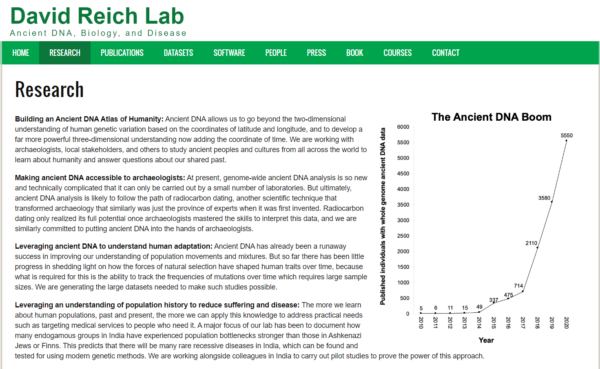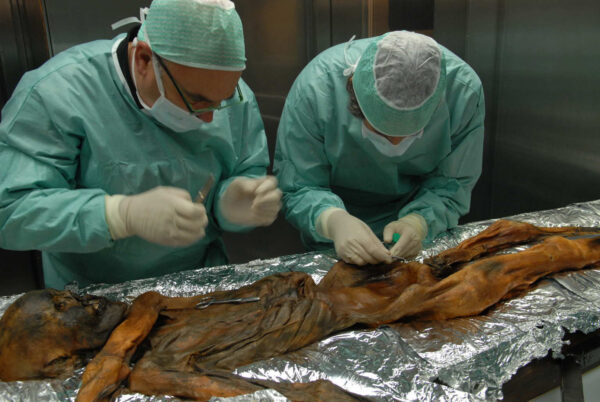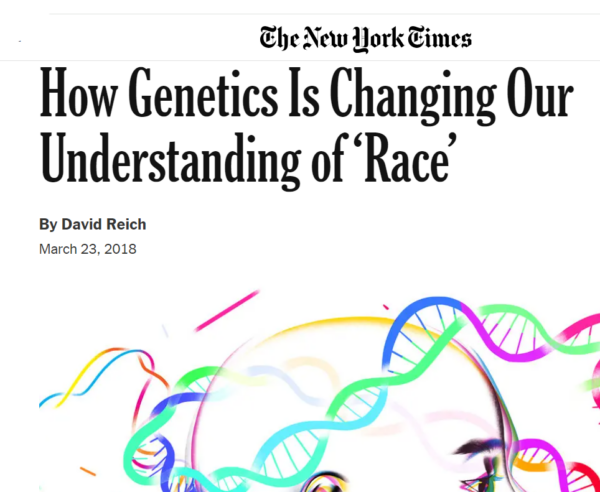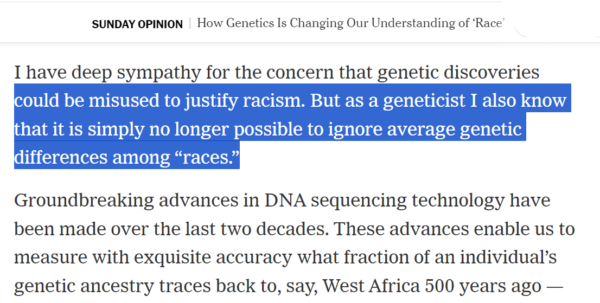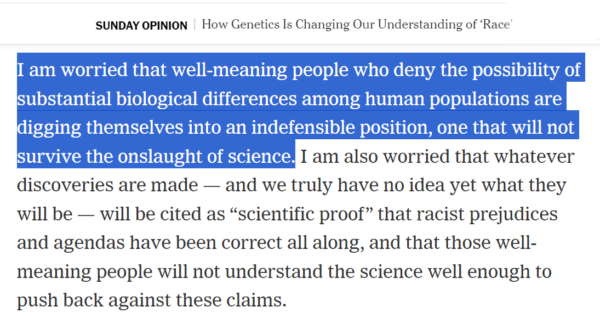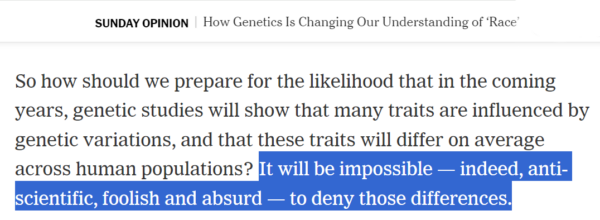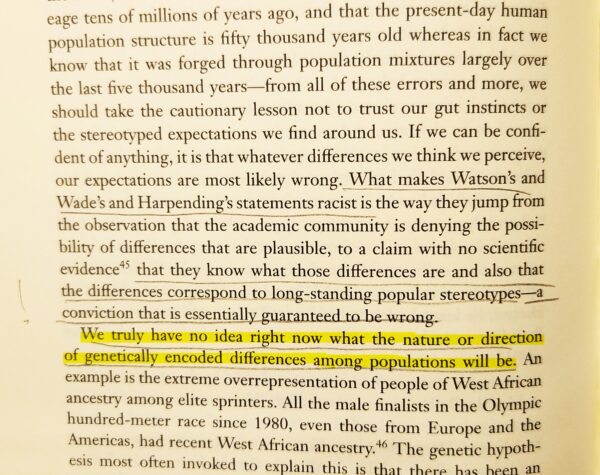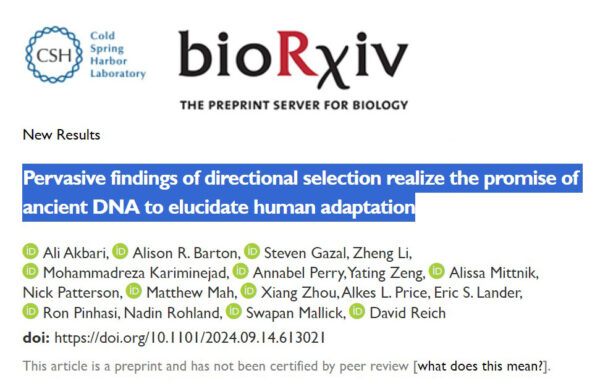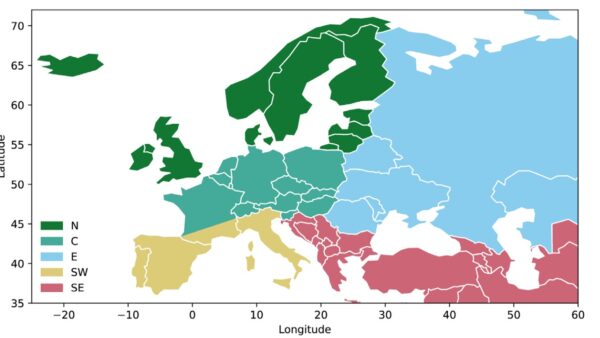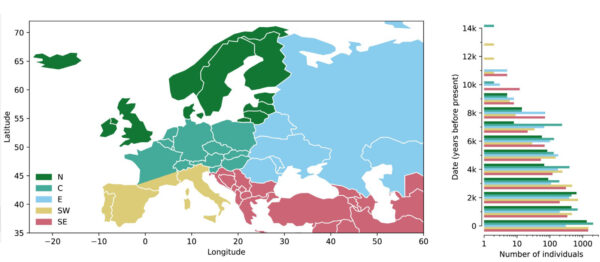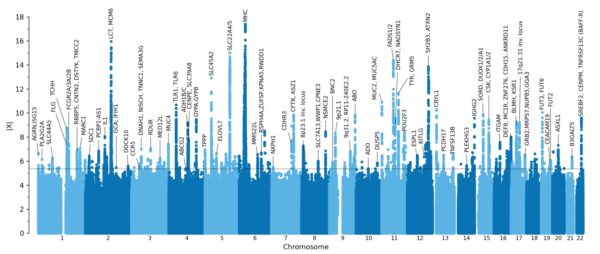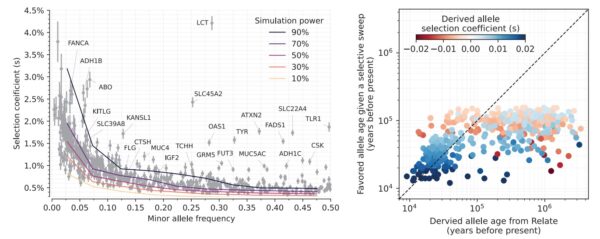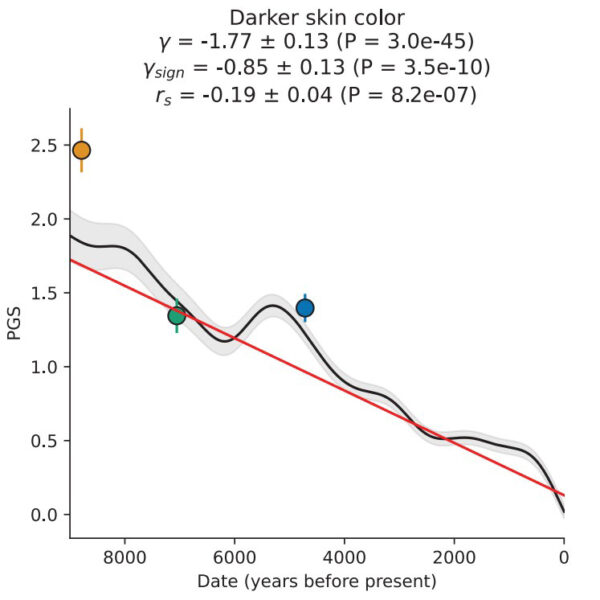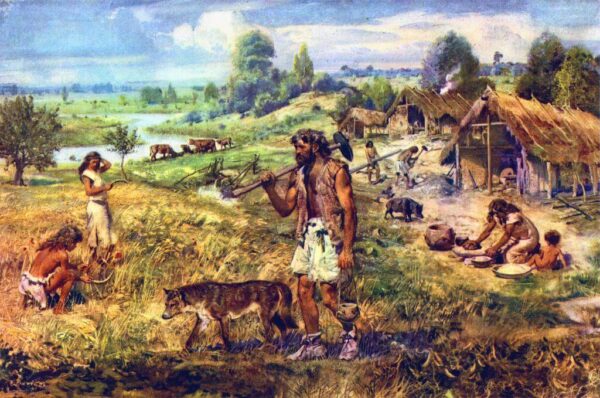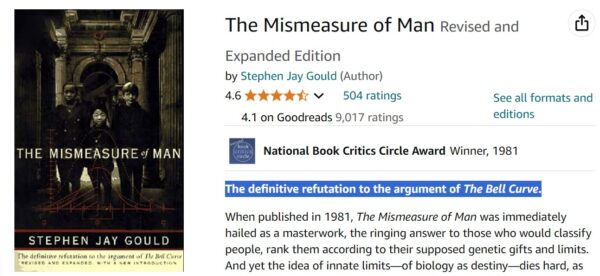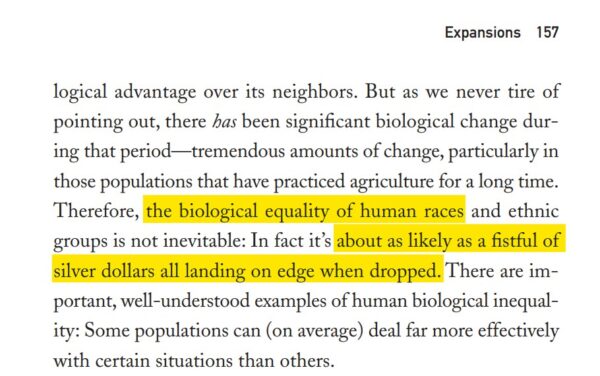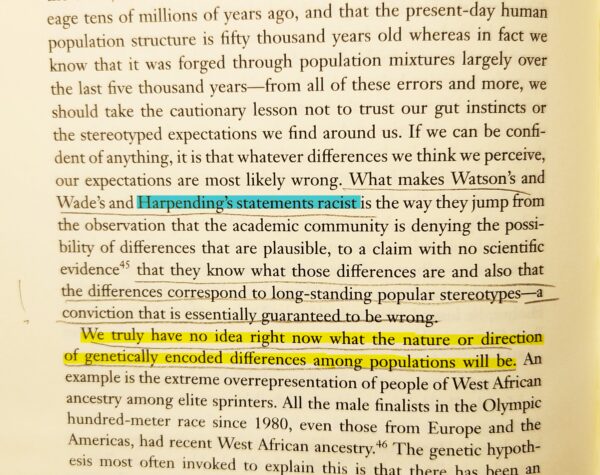This video is available on Rumble, BitChute, and Odysee.
Science is on our side. It always has been on our side. Every advance in genetics and biology confirms what our grandparents always knew: Race is real, races are different, and it’s silly to pretend otherwise.
Biologists and geneticists understand this, but they mostly keep quiet because they know what happens to you if you speak up.
The scientific evidence is building up so quickly and so persuasively, that some liberals are worried it could slip out into the public where bad people could misuse it.
One of those liberals is David Reich, professor of genetics and human evolutionary biology at Harvard.
Isn’t that an amusing evolution graphic? Monkeys drop from the trees, start walking, learn to use fire, and then brandish spears. Professor Reich runs one of the world’s foremost labs that study ancient DNA.
The graph on the right shows the increase over the years of the number of people who lived thousands of years ago, whose DNA has now been sequenced. The number rises all the time, and we can now have an increasingly accurate idea of what these people were like: from how smart they were to how much body fat they had to how likely they were to be schizophrenic. I know. It seems almost miraculous, doesn’t it?
There are two miracles, really. One is how much you can know about someone just from looking at his DNA. That’s because of a technique called Genome-Wide Association Studies or GWAS. Five years ago, I reviewed a book called Blueprint that explained how this works.
The findings get more precise all the time.
The second miracle is that we can apply GWAS findings to the DNA of people who lived thousands of years ago!
And to the horror of egalitarians, race data are piling up to an alarming degree. What’s a good regime scientist to do? In 2018, Professor Reich issued a warning in a New York Times article called “How Genetics Is Changing Our Understanding of ‘Race’.”
First, he worries that science “could be misused to justify racism. But as a geneticist I also know that it is simply no longer possible to ignore average genetic differences among ‘races.’ ”
He continues: “I am worried that well-meaning people who deny the possibility of substantial biological differences among human populations are digging themselves into an indefensible position, one that will not survive the onslaught of science.”
“It will be impossible — indeed, anti-scientific, foolish and absurd — to deny those differences [between racial groups].”
The genetic proof of race differences is so great that people who deny them will sound like ignoramuses, and “racists” will have free rein to twist the facts.
Later that year, Professor Reich wrote this book, Who We Are and How We Got Here, about all the astonishing things we have learned from applying GWAS findings to ancient DNA. He concedes that different “populations” – you might as well call them races – are going to turn out to be “behaviorally and cognitively” different for genetic reasons. But then on page 264 he lets fly with this whopper: “We truly have no idea right now what the nature or direction of genetically encoded differences among populations will be.”
No idea? I have an idea. You have an idea. Genes will show that Jews are smart, East Asians have good impulse control, Amerindians get diabetes, and Africans – well, they behave like Africans.
If you look carefully, you can see the exclamation mark I wrote in the margin when I came across this guff.
Poor David Reich. He can’t help himself. He keeps doing science. It’s just too interesting to stop, even if it keeps digging the grave of egalitarian fantasies.
He and a team mostly from Harvard have just posted a preprint of a paper called “Pervasive findings of directional selection realize the promise of ancient DNA to elucidate human adaptation.”
The team studied the DNA of 8,433 people who lived over the past 14,000 years in the areas on this map.
The color-coded bar graph on the right shows how many humans the team looked at for different periods, and what areas of the map they came from.
As you can see at the top, there aren’t many DNA samples that are more than 10,000 years old, and the very oldest ones come from western Europe and the Mediterranean.
This study compared these DNA profiles with those of 6,510 contemporary people from the same areas to determine how the frequencies of certain genetic patterns changed over the millennia. They also refined the data to increase its accuracy with methods I don’t begin to understand.
Here are some findings. These three graphs show a steady rise in the frequency of gene patterns that we now know are associated with, from left to right, intelligence, household income, and years of schooling.
Obviously, we know nothing about the incomes of these ancient people and they probably didn’t go to school. But we do know the genetic patterns associated with those things today. In general, smarter people stay in school longer, so years of schooling are a sign of intelligence. Whatever these folks were doing – hunting, farming, herding – there was clear evolutionary pressure favoring intelligence and also favoring the talents and personality that help people today make money. The colored circles represent the frequencies, at certain points in time, of three ancestral populations of today’s Europeans: Western Hunter-Gatherers are orange, Early European Farmers are green, and Steppe Pastoralists are blue.
Here are declining frequencies of the gene patterns associated today with bipolar disorder, schizophrenia, and being a smoker.
Evolution selects against mental illness, for obvious reasons. Ancient Europeans had no tobacco to smoke, but the traits that make people smoke today, whatever they are, tended to be bred out
Here are the genetic patterns associated with darker skin color.
Our ancestors were clearly getting lighter. The usual assumption is that people in northern climates who didn’t get vitamin D from fish evolved lighter skin so they could get more D from the sun. Light skin also may have been attractive to potential mates.
These three graphs show a steady decline in the gene patterns associated with body fat percentage, waist circumference, and waist to hip ratio.
These findings are entirely consistent with the colossal change in evolutionary pressures – and the speed of evolution – after our ancestors started farming and stopped being hunter-gatherers.
It’s good for hunters to have some fat.
They might go for days before the next kill. Once farmers figured out how to store food over the winter, their bodies could count on regular meals, and they didn’t need as much body fat.
Also, their diet changed from mostly meat to grain crops, which have lots of carbohydrates. When people whose bodies evolved to eat meat start eating carbs, they are likely to get Type 2 Diabetes. The human groups that started farming earliest had more millennia for evolution to select against Type 2 Diabetes. And, sure enough, people who came to farming late or even not at all – Eskimos, Australian Aborigines, Amerindians, Bushmen – often get diabetes when they switch to a high-carb diet.
They haven’t evolved to handle it.
Also, when humans start growing grains, they discover fermentation. Populations whose ancestors didn’t drink alcohol for the last several thousand years have not developed a tolerance for it.
They have a terrible problem with alcoholism and fetal alcohol syndrome.
This latest David Reich study did not look at racial differences. However, it is a powerful blow to one of the cherished ideas of the we-are-all-the-same crowd: that the human brain hasn’t changed much since modern homo sapiens appeared. Some college students are still made to read Steven Jay Gould’s The Mismeasure of Man, with its Amazon blurb that fancifully calls it “the definitive refutation to the argument of The Bell Curve.”
Gould had a theory he called “punctuated equilibrium,” according to which evolution sometimes just rests for a while, at least when it comes to the brain.
That way, evolution could produce people as different as Australian Aborigines and Europeans but the brains of the two groups could be exactly the same.
This is so obviously cuckoo that only people who deliberately fool themselves could believe it, but believing impossible things makes you a good white person.
Here is a different book, called The 10,000 Year Explosion, written in 2009, about the very fast evolution of different groups – in different directions – since humans started farming. Farming didn’t just change diet. For the first time, people could stay in one place, build houses, and own more things than they could carry around with them.
Smart people who could plan ahead ended up with more stuff than stupid, shiftless people. Populations exploded far beyond the size of hunting bands. This put an evolutionary premium on resistance to disease and the ability to not be outsmarted by conmen. This is a truly fascinating book that is fully backed up by this recent David Reich study.
Authors Gregory Cochran and Henry Harpending explain that evolution has been roaring along 100 times faster than during the Stone Age, that it is “madly galloping off in all directions,” and that “the biological equality of human races” is “about as likely as a fistful of silver dollars all landing on edge when dropped.”
Does the David Reich team tip its hat to Cochran and Harpending’s pioneering work of 15 years ago? Nope. In the earlier book I showed you about ancient DNA, Prof. Reich warns you that Harpending’s statements are racist.
David Reich is clearly a smart guy, and from what I can tell, a good scientist.
But what a life he must lead, worrying how to twist his findings in ways that will please people who vote for Kamala Harris. But keep the data coming, professor. Even if you don’t dare explain what they mean, we’ll be happy to.


